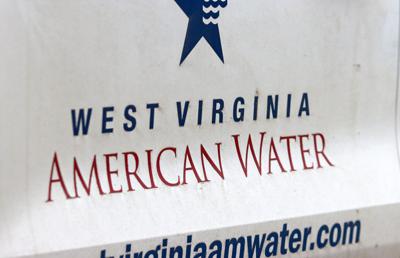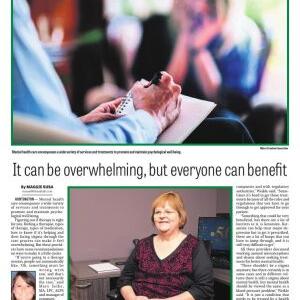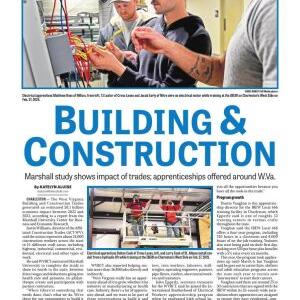West Virginia American Water has asked state utility regulators for a 27.9% rate hike that would increase the investor-owned utility����ֱ���s net annual water and wastewater revenue by $60.5 million, claiming a need to replace aging infrastructure.
The company ����ֱ��� serving 171,785 water and 1,853 wastewater customers throughout West Virginia ����ֱ��� wants the state Public Service Commission to approve a two-step rate climb that the company said would result in an average monthly water bill increase of roughly $11 in the first step and $5 in the second.
When accounting for water and wastewater infrastructure improvement charges customers already are paying in 2025, the total proposed net water and wastewater revenue increase would be $47.8 million, or 22.1%, over the company����ֱ���s annualized combined revenues at current rates, per recent utility testimony.
The first step of the rate increase for water service would be a net hike of 15.1% over current rates, effective March 1, followed by a second step bringing a 5.7% hike over then-current rates, effective March 1, 2027.
West Virginia American Water says the step increases would allow it to recover planned investment in infrastructure that is in service at the time the rates are implemented, which it expects should help lower the frequency of rate cases.
The utility is also seeking recovery of what it said are increasing operating and maintenance expenses, including those stemming from new regulatory requirements, pending acquisitions and increased production costs.
����ֱ���[T]he Company is not immune to inflationary pressures,����ֱ��� West Virginia American Water President Scott Wyman said in PSC testimony requesting the rate hikes.
The proposal is the latest in a history of bill increase requests from West Virginia American Water. The utility has drawn criticism from the PSC Consumer Advocate Division, an independent arm of the agency charged with the interests of residential ratepayers, for past rate increase requests approved by the PSC to cover infrastructure upgrades, saying an infrastructure surcharge mechanism the PSC approved in 2016 hasn����ֱ���t sufficiently addressed system water loss concerns.
The West Virginia American Water rate increase request comes amid a long-term ascent in the company����ֱ���s profits. From 2014 to 2024, the company saw its net income nearly quintuple, from just below $8.5 million in 2014 to over $40.8 million in 2024.
The company����ֱ���s number of active customers increased 1.6% over the same span, to 171,799.
WVAW acquisitions factor into rate hike request
In its rate increase request filing, West Virginia American Water proposed recovery of costs from acquiring other water and wastewater service providers. Pending acquisitions the company said it included in its rate calculations included:
- Armstrong Public Service District, a Fayette County water utility: June 30 closing date
- Nitro Regional Wastewater Utility, a Kanawha County wastewater utility: Sept. 30 closing date
West Virginia American Water estimated $150,000 of acquisition and transaction costs for the Armstrong PSD transfer and $100,000 in those costs for the Nitro transfer.
West Virginia American Water also proposed recovery of transition costs incurred in its acquisition of Jefferson Utilities Inc., a Jefferson County utility, reporting those costs totaled just under $877,000.
The PSC approved West Virginia American Water acquiring Jefferson Utilities along with three other Jefferson County utilities for $27 million in 2023.
West Virginia American Water reported a $20.1 million purchase price for Nitro Regional Wastewater and 4,474 customers served by Nitro. It reported a $2.05 million purchase price for Armstrong PSD Water and 713 customers served by Armstrong.
WVAW proposes new discount tariff for lower incomes
West Virginia American Water has proposed a new ����ֱ���Universal Affordability Discount Tariff����ֱ��� that would offer a 15% to 60% discount to qualifying customers aimed at keeping the expected bill for basic water or water service to 3% of annual household income or below. The tariff����ֱ���s discounts would be:
- 60%: 0%-50% of federal poverty level
- 40%: 50%-100% of federal poverty level
- 30%: 100%-150% of federal poverty level
- 15%: 150%-200% of federal poverty level
The company estimates there are approximately 53,300 water customers and 2,000 wastewater customers in West Virginia with household incomes at or below 200% of the federal poverty level that would be eligible for service under the proposed tariff.
West Virginia American Water����ֱ���s current discount program doesn����ֱ���t lower bills to a manageable range for some of the company����ֱ���s most vulnerable customers, American Water Works Service Company principal regulatory analyst Heath Brooks said in case testimony filed with the PSC. American Water Works Service Company is a subsidiary of American Water Works Company, parent company of West Virginia American.
The company currently has two residential low-income discount customer groups:
- Customers subject to its discounted special reduced rate residential service tariff rates that also get a statutory rate discount of 20%
- Customers exclusively subject to the company����ֱ���s discounted tariff rates due to their income being at or under 200% of the federal poverty level
As of Dec. 31, 6,191 water and 59 wastewater customers were subject to both, according to Brooks����ֱ��� testimony.
Average residential bill more than doubled over 17 years
West Virginia American Water has annual amounts of declining usage for residential and commercial customers of roughly 460 and 2,481 gallons per customer, respectively, per Brooks����ֱ��� testimony.
Brooks attributed a decline in general residential customers����ֱ��� usage to introduction of low-flow fixtures and appliances, new regulations, conservation programs and public initiatives that have led to greater consumer water conservation awareness.
But the utility����ֱ���s bills have climbed sharply over time.
The average monthly West Virginia American Water residential bill for 3,100 gallons grew from $29.54 in 2005 to $65.99 in 2022, according to data from the Consumer Advocate Division.
Fourteen rate adjustments from 2005 to 2022 included six rate increases through an infrastructure improvement surcharge approved by the PSC for West Virginia American Water known as the Distribution System Improvement Charge, or DSIC.
The utility����ֱ���s water loss rate increased from 27.6% in 2014 to 28.1% in 2021, according to a filing in a previous rate case. That 28.1% percentage is nearly double the 15% clip to which a PSC staff engineering manager previously recommended that West Virginia American lower its unaccounted-for water loss rate through aggressive leak detection and restoration plans.
Consumer Advocate Division Director Robert Williams has expressed concern over company water loss rates and recommended exploring the possibility of financing much of the rehabilitation and replacement of West Virginia American core infrastructure through public-private partnerships. Such partnerships, Williams has said, could lead to grant money.
Wyman, who became West Virginia American Water president in January after spending more than 30 years at FirstEnergy Corp., told the Gazette-Mail in a teleconference interview prior to last month����ֱ���s rate hike request filing that the DSIC mechanism is ����ֱ���doing what it����ֱ���s exactly intended to do.����ֱ���
����ֱ���We����ֱ���re going to start working on it a little more,����ֱ��� Wyman said of water loss improvements. ����ֱ���We����ֱ���ve done a ton of work around it. You����ֱ���ve got to have metering in the right spots to know, OK, we know how much went out there, how much was used. Then you know there����ֱ���s leaks.����ֱ���
The PSC approved an agreement in January that West Virginia American Water said would result in a 2.78% rate increase, or roughly $2 per month, effective Jan. 1, 2025, for the average residential water and wastewater customer using roughly 3,000 gallons per month. The company had proposed to invest $40.6 million in water system improvements for 2025.
The rate agreement was forged between West Virginia American, PSC staff and the PSC Consumer Advocate Division.













